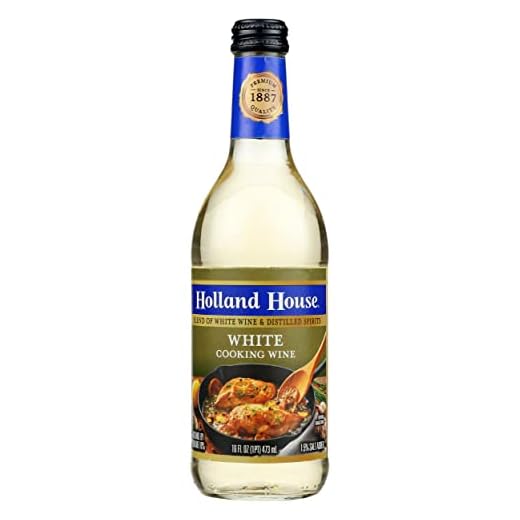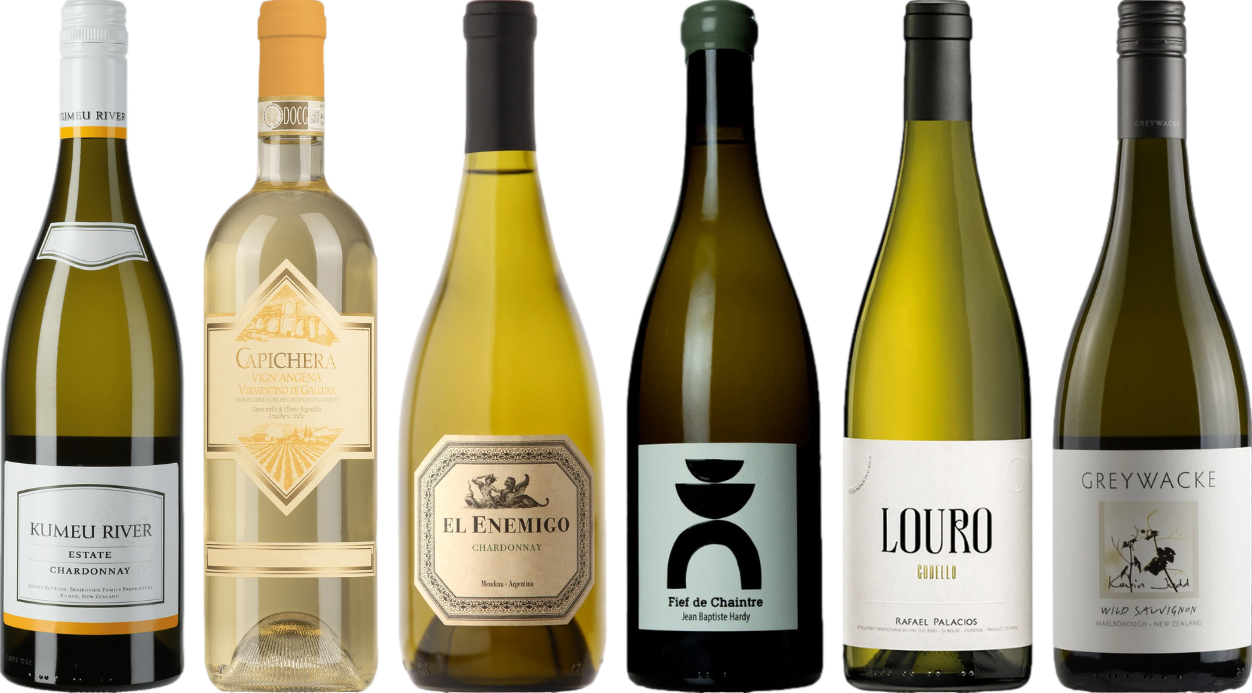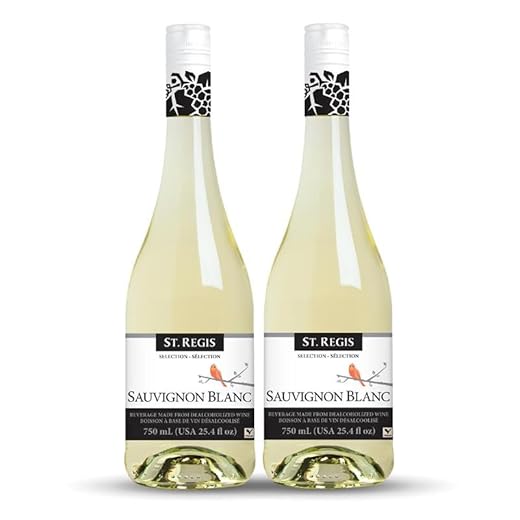



Chardonnay stands out as an excellent option for enhancing flavors in various dishes. Its balanced acidity and rich fruit profile make it versatile, particularly in creamy sauces and seafood preparations. For a delightful experience, opt for an unoaked version, as it allows the natural fruit characteristics to shine through without overpowering the dish.
Sauvignon Blanc is another superb selection, especially for lighter fare. Its crispness and herbal notes pair beautifully with vegetables and chicken, adding a refreshing zing that elevates the overall taste. Look for one that has a bright acidity to complement and enhance your culinary creations.
If you’re preparing a dish that requires a touch of sweetness, consider Riesling. A dry or off-dry variant can add a lovely depth to Asian recipes or spicy dishes, balancing heat with its inherent sweetness. It’s an ideal companion for stir-fries or grilled meats, making it a favorite in my kitchen.
Lastly, Pinot Grigio offers a clean, light option that works well in various recipes, particularly when you want to maintain a subtle flavor profile. Its crispness makes it a fine choice for vinaigrettes and marinades, bringing a refreshing touch to salads and seafood.
Recommended Options for Culinary Use
Sauvignon Blanc stands out as an excellent choice. Its crisp acidity and citrus notes enhance seafood dishes, poultry, and vegetable preparations. Look for a New Zealand or California version for a refreshing profile that complements a variety of recipes.
Chardonnay and Its Versatility
Chardonnay is another versatile option, particularly the unoaked varieties. These provide a clean and bright flavor that works beautifully in sauces and risottos. A bottle from Burgundy or an unoaked California option can elevate your dish without overpowering it.
Pinot Grigio for Light Dishes
If you prefer something lighter, Pinot Grigio is ideal. Its crispness and subtle fruit flavors make it suitable for delicate sauces and light pasta dishes. An Italian bottling often delivers the refreshing qualities needed for such culinary applications.
Choosing the Right White Wine for Sauces
Opt for a dry and crisp option like Sauvignon Blanc or Pinot Grigio. These varieties enhance flavors without overpowering the dish. For creamy sauces, Chardonnay can provide a rich texture, while a light Riesling adds a touch of sweetness that complements spicy elements.
When preparing seafood dishes, a zesty Vermentino or Grüner Veltliner harmonizes beautifully, enhancing the natural flavors. Avoid overly sweet or oaky selections, as they can clash with the intended taste profile of your sauce.
Always ensure that the choice of beverage to cook with is also enjoyable to sip. For a practical application, consider this guide on how to cook a baking hen, where your sauce choice can elevate the entire meal.
Best Choices for Seafood Dishes
Chardonnay stands out as a prime selection for pairing with seafood. Its versatility complements a range of flavors, from buttery scallops to grilled fish. Opt for unoaked versions to enhance the freshness of the dish.
Sauvignon Blanc is another excellent option, particularly with dishes featuring herbs or citrus. The bright acidity and zesty profile elevate the taste of shrimp and oysters, making it a delightful match.
Additional Recommendations
Pinot Grigio offers a light and crisp alternative, ideal for lighter fare such as ceviche or delicate white fish. Its clean finish allows the natural flavors of the seafood to shine.
Vermentino, with its coastal origins, pairs beautifully with Mediterranean seafood. Its herbal notes and refreshing acidity make it suitable for dishes with olives or tomatoes.
| Type | Best Pairings |
|---|---|
| Chardonnay | Buttery scallops, grilled fish |
| Sauvignon Blanc | Shrimp, oysters, dishes with herbs |
| Pinot Grigio | Ceviche, delicate white fish |
| Vermentino | Mediterranean seafood, dishes with olives |
Using White Wine in Marinades: Top Picks
For marinades that elevate your dishes, I recommend choosing a dry Sauvignon Blanc or a crisp Pinot Grigio. These selections add acidity and a refreshing brightness that enhance the overall flavor profile of meats and vegetables.
Sauvignon Blanc
- Offers vibrant citrus notes, enhancing the freshness of your marinade.
- Pairs well with herbs like thyme and rosemary, making it ideal for chicken or fish.
- Look for options from regions like Marlborough, New Zealand, known for their zesty characteristics.
Pinot Grigio
- Features a lighter body and subtle fruit flavors, perfect for delicate proteins.
- Works well with garlic and lemon, creating a balanced marinade for shrimp or scallops.
- Italian versions often provide a clean finish, enhancing the natural flavors of your dish.
Consider also a dry Riesling if you prefer a hint of sweetness without overwhelming the palate. It complements Asian-inspired marinades excellently, adding depth to soy sauce or ginger combinations.
Experiment with these selections to discover how they transform your marinades into mouthwatering experiences.
Cooking Techniques that Enhance Flavor from White Varietals
Deglazing is an effective method. After sautéing ingredients, pour a splash of your chosen varietal into the hot pan. This process lifts the flavorful browned bits stuck to the bottom, creating a rich base for sauces and gravies.
Another technique is reduction. Simmering the liquid until it thickens concentrates the flavors, making it a fantastic addition to dishes like risottos or ravioli. Aim for a syrupy consistency to maximize the impact.
Creating Infusions
Infusing oils with aromatic components can elevate the taste profile significantly. Combine gently warmed olive oil with herbs, garlic, and a splash of your selected varietal. Allow it to cool before using it in dressings or drizzling over finished plates.
Combining with Acid
Pairing with acidic elements, such as citrus or vinegar, can brighten flavors. A drizzle of lemon juice or a splash of vinegar enhances the overall taste, balancing richness in creamy sauces or seafood dishes. This combination works wonders in enhancing the final dish’s complexity.
Common Mistakes When Cooking with White Wine
Avoid using overly sweet varieties. This can lead to overly sugary dishes, masking the flavors of other ingredients. Stick to dry selections that enhance rather than dominate.
Don’t forget to adjust the quantity based on the dish. A splash for deglazing is sufficient, while a larger amount works better in a sauce. Overusing can create an overpowering taste.
Ignoring Quality
Using low-grade options can ruin a meal. Choose a bottle that you would enjoy drinking. The quality directly impacts the final flavor profile.
Neglecting Cooking Time
Rushing the process can prevent the alcohol from evaporating, leaving an undesirable raw taste. Allow sufficient time for the flavors to meld and develop.








